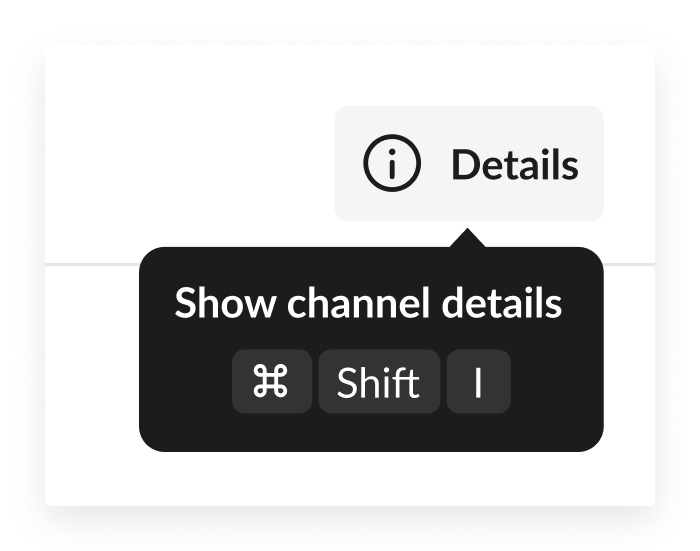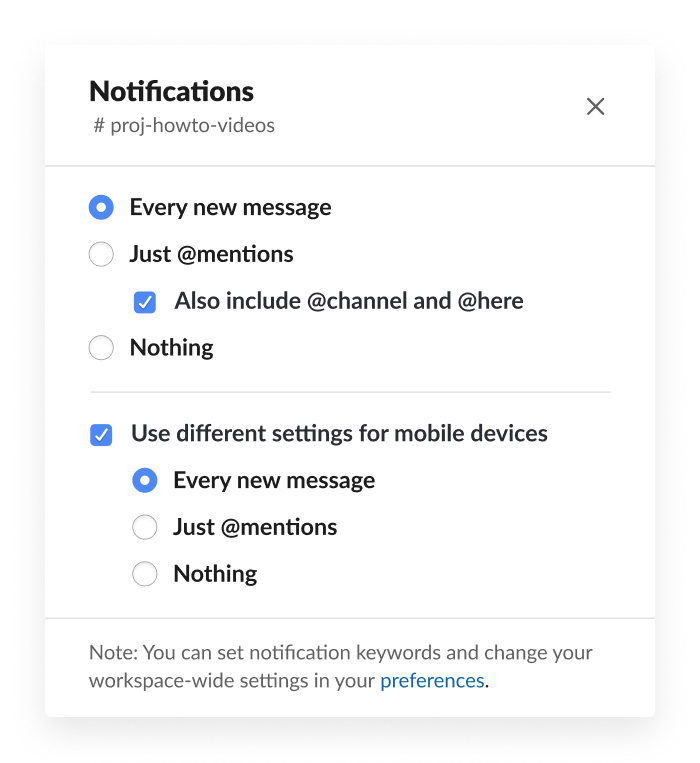Not all office meetings are equally relevant to you, and neither are all conversations in Slack. Thankfully, by tweaking a few settings, you can customise notifications, allowing you to stay focused on the work that matters to you while turning down the volume on topics that you find distracting.
To keep you in the know – and to ensure that you can carve out some quiet focus time in Slack when needed – here’s a quick primer on how to make notifications fit your personal preferences.
Slack notification basics
By default, channels and direct messages with unread activity will appear in bold in your sidebar. They’ll also show a red notification badge if someone mentions your username or any keywords that you’ve specified.
Add your own customised keywords
The keyword notifications feature will alert you whenever someone mentions a topic that you care about.

Try setting your keywords for:
- Titles or code names of important projects, to catch when they’re discussed in channels that you’ve joined
- Customer or account names that you work with, to stay on top of any problems that they’re encountering
- Your own name, in case someone refers to you without using an @mention
- Fun things (so that you’ll never miss free pizza or swag in the office again)
Be selective about your keywords to avoid getting too many notifications. You can always start with a handful, and then reduce them so that you’re only alerted as often as proves useful.
Turn key channels up
If there’s a project that you’re following closely that’s in the final stretch, or you have a small team channel that is so vital you never want to miss a single message, click on ‘Channel details’ to set the notification preferences to all new messages.


You’ll get an alert for every single message that’s posted, but you may find that this is key to staying in touch with your team. If you enable this for project channels, you can dial the alerts back down to their default settings once the projects have been completed.
Turn down the volume on sparingly used channels

Conversely, you can mute channels that you want to be in but don’t follow closely. This is especially handy for channels with lots of messages from bots and integrations or channels that you only visit for specific, one-off requests, such as #help-it or #help-workplace.
Muted channels won’t appear in bold when there’s unread activity, allowing you to read through them at your own convenience. If someone mentions your username or a designated keyword in these channels, don’t worry – you’ll still see a red badge on a muted channel in these instances.
Carve out focus time with do not disturb
Do not disturb (DND) mode is the best way to pause notifications from Slack. To temporarily snooze notifications when you need to concentrate, click on the bell icon at the top of your channel bar. Then choose a time or set your own customised interval. You can also set automatic recurring DND hours to avoid after-hours interruptions.
Your colleagues will see when you’re in DND mode and know not to expect a response right away. This puts them at ease: they can message you when it’s convenient, without worrying about waking you up or interrupting deeply focused work. And your teammates will still have the option to push a notification through if it’s urgent.
Quick tip: Pause notifications on the go with the /dnd slash command, followed by a specific time of day or time frame.
Mobile and email notifications
Notifications are also sent to your mobile Slack app, but thanks to a customisable delay, you won’t get overloaded with notifications on every device the moment that they arrive.

If you’ve already read a message within the default time frame on your desktop, it won’t get pushed to your phone as an alert. If you would like to know any time that you’re mentioned as soon as possible on mobile, you can adjust this delay to zero, and you can choose whether or not to get email notifications of mentions and DMs as well.
Slack notifications are a reliable way to stay up to date on the conversations that need your attention the most. Customise them to the way that you work best, and they’ll help to bring you peace of mind (and peace and quiet) when and where you see fit.










